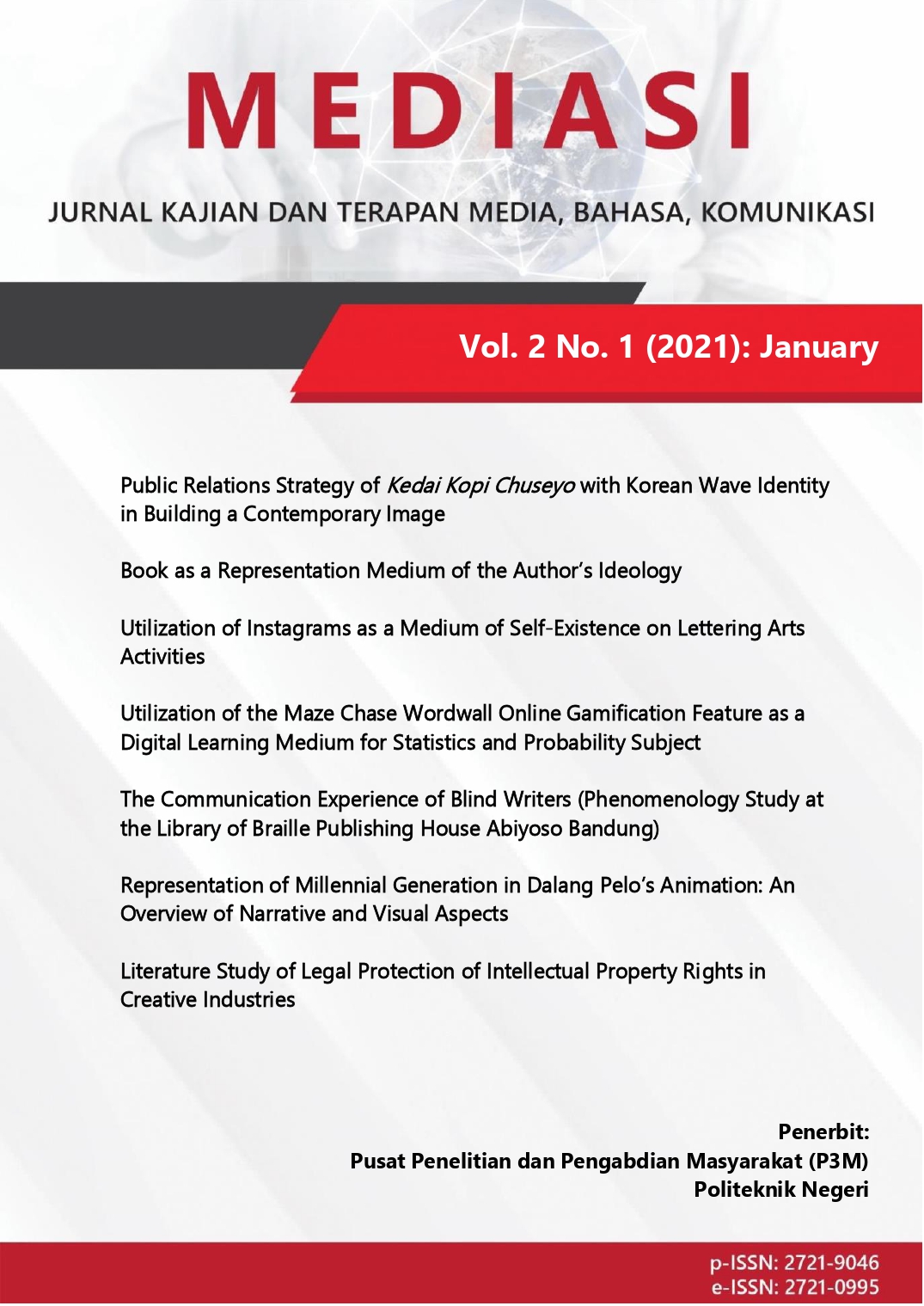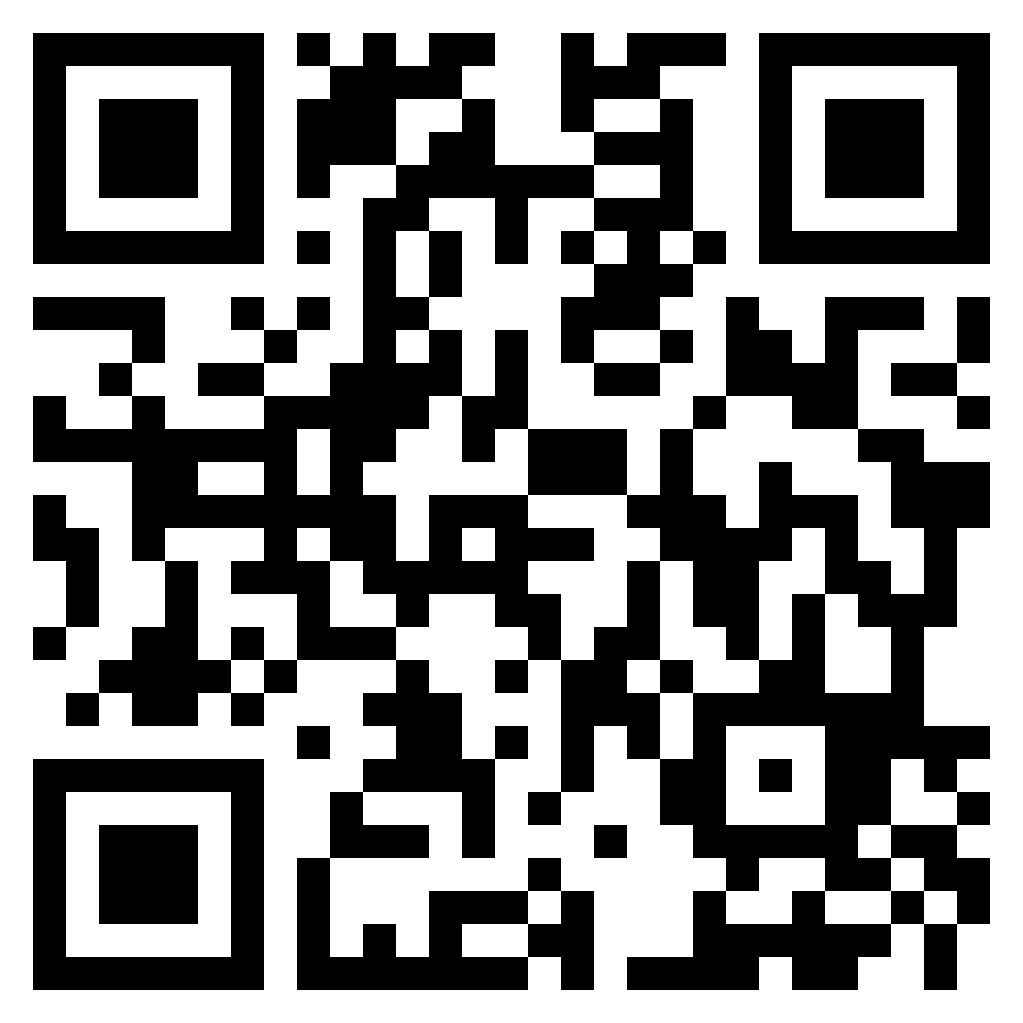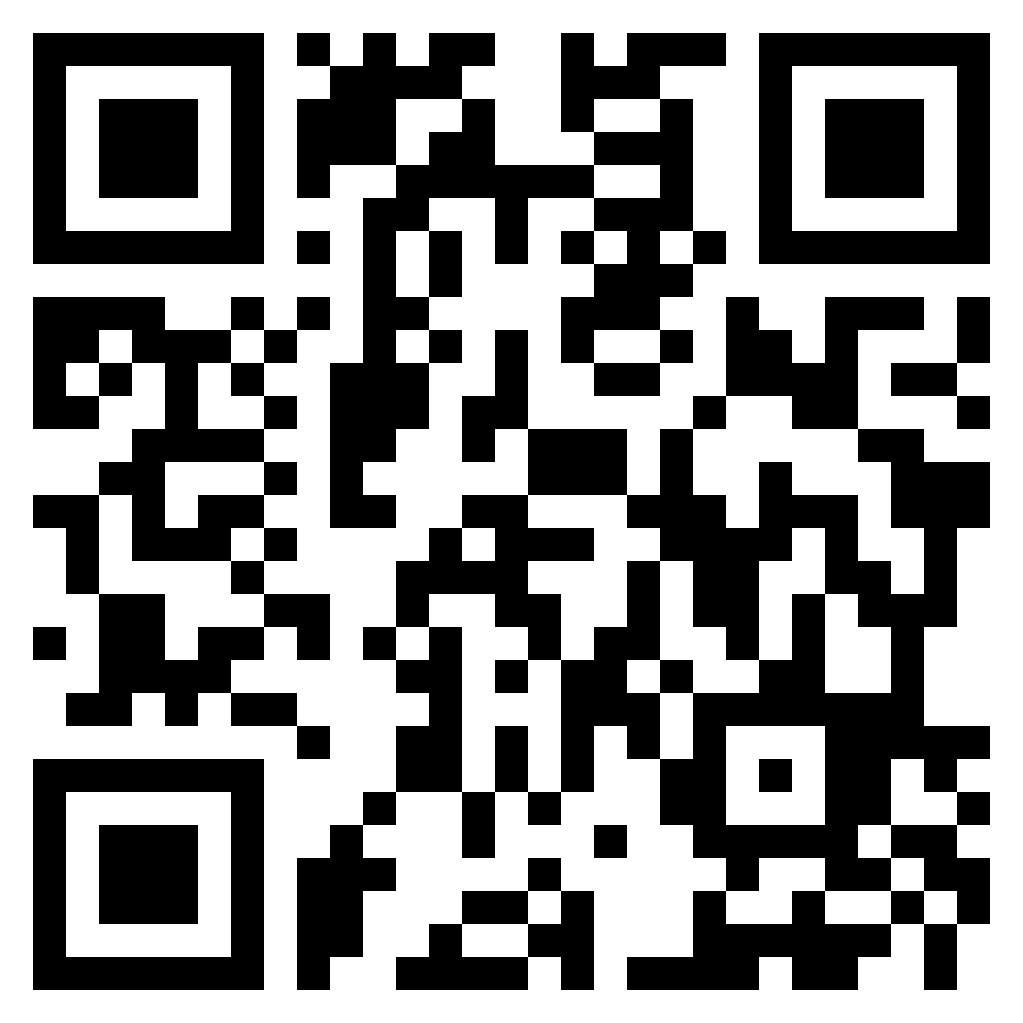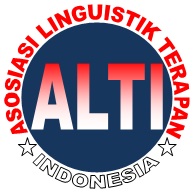Representation of Millennial Generation in Dalang Pelo’s Animation: An Overview of Narrative and Visual Aspects
DOI:
https://doi.org/10.46961/mediasi.v2i1.256Keywords:
Millennial Generation, Animated Films, Narrative Aspects, Visual Aspects,Abstract
Each animator has a characteristic in framing the story and visuals in their animated film. This phenomenon is interesting to study considering that currently the millennial generation dominates animated films. This study aims at describing how the millennial generation is represented by the animation of Dalang Pelo. This study uses a qualitative research method with a descriptive analysis. The findings in this study are the representations of themillennial generation through narrative and visual aspects in the animated film Dalang Pelo. The animator represents the narrative story in a simple animation with three acts, and this shows that the millennial generation does not like complicated things. Findings from the aspect of cinematography are used to support dramatic functions, narrative delivery, and story themes in animation that viewers, especially the millennial generation, who tend to be easily carried away with feelings can enjoy the story.
References
Ambarwati, A., & Raharjo, S. T. (2018). Prinsip Kepemimpinan Character of a Leader pada Era Generasi Milenial. PHILANTHROPY: Journal of Psychology, 2(2), 114-127.
Creswell, J. W. (2009). Research Design Qualitative, Quantitative, and Mixed Methods Approaches.University of Nebraska-Lincoln: SAGE Publications.
Djalle, Z. G. (2006). The Making of 3D Animation Movie Using 3DstudioMax. Bandung: Informatika.
Hasbullah, H., & Yasa, G. P. P. A. (2020). Makna Kode Visual dalam Scene Film Animasi Battle Of Surabaya. Jurnal Bahasa Rupa, 3(2), 124-129.
Hendriana, Y., & Aziz, M. (2016). Designing 3D Animation of Javanese Shadow Puppets to Learning Cultural Heritage. International Journal of Computer Science and Information Security, 14(10), 507.
Hidayatullah, S., Waris, A., & Devianti, R. C. (2018). Perilaku Generasi Milenial dalam Menggunakan Aplikasi Go-food. Jurnal Manajemen dan kewirausahaan, 6(2), 240-249.
Khalis, F. M., Mustaffa, N., & Ali, M. N. S. (2016). The sense of local identity characteristic in Malaysian animation. International Journal of Arts & Sciences, 9(3), 485.
Lestari, P. A. R., & Setiawan, I. K. (2019). Adaptasi Cerita Rakyat Jayaprana dan Layonsari dalam Bentuk Animasi 2D. Jurnal Nawala Visual, 1(2), 88-94.
Moleong, J. L. (2012). Metodologi penelitian kualitatif. Bandung: Rosdakarya.
Muhdaliha, B., & Batuaya, D. R. D. (2017). Film Animasi 2 Dimensi Cerita Rakyat Bali Berjudul I Ceker Cipak. Jurnal Bahasa Rupa, 1(1), 61-72.
Othman, A. N. B. (2009). Film Animasi Malaysia: Narasi Verbal ke Visual. ITB J. Vis. Art & Des, 3(1). 79-88.
Poluakan, M. V., Dikayuana, D., Wibowo, H., & Raharjo, S. T. (2019). Potret Generasi Milenial pada Era Revolusi Industri 4.0. Focus: Jurnal Pekerjaan Sosial, 2(2), 187-197.
Putra, I. N. A. S., & Saputra, I. P. A. (2017). Perancangan Media Informasi Program Studi Teknik Informatika Dan Sistem Komputer Pada STMIK STIKOM Indonesia Berbasis Animasi 2D. Jurnal Bahasa Rupa, 1(1), 17-24.
Putri, G. I., & Candraningrum, D. A. (2019). Pemanfaatan Social Traffic untuk Meningkatkan Page Views Pada Video Gagasan Isengin Acil! Leri Marahi Akun Youtube dan Instagram Dalang Pelo. Prologia, 3(2), 519-524.
Roza, P. (2020). Digital Citizenship: Menyiapkan Generasi Milenial Menjadi Warga Negara Demokratis Di Abad Digital. Jurnal Sosioteknologi, 19(2), 190-202.
Sabani, N. (2018). Generasi Milenial dan Absurditas Debat Kusir Virtual. Informasi: Kajian Ilmu Komunikasi, 48(1), 95-108.
Sangian, J. G., & Lumenta, A. S. (2017). Film Animasi Tragedi 5 Maret 2014 di Fakultas Teknik. Jurnal Teknik Elektro dan Komputer, 6(4), 205-214.
Sari, S. (2019). Literasi Media pada Generasi Milenial di Era Digital. Profesional: Jurnal Komunikasi dan Administrasi Publik, 6(2), 30-42.
Suryadi, B. (2015). Generasi y: Karakteristik, Masalah, dan Peran Konselor. Seminar dan Workshop Internasional MALINDO 4 di Bali, 22-23 Mei 2015. Diselenggarakan oleh Asosiasi Bimbingan dan Konseling Indonesia (ABKIN).
Winarni, R. W., & Wardani, W. G. W. (2016). Produksi Film Animasi Sebagai Media Kampanye Anti Kejahatan Perdagangan Manusia. Jurnal Desain, 3(1), 37-48.
Downloads
Published
How to Cite
Issue
Section
Citation Check
License
You are free to:
- Share — copy and redistribute the material in any medium or format
- Adapt — remix, transform, and build upon the material
- The licensor cannot revoke these freedoms as long as you follow the license terms.
Under the following terms: Attribution; NonCommercial; and no additional restrictions.















